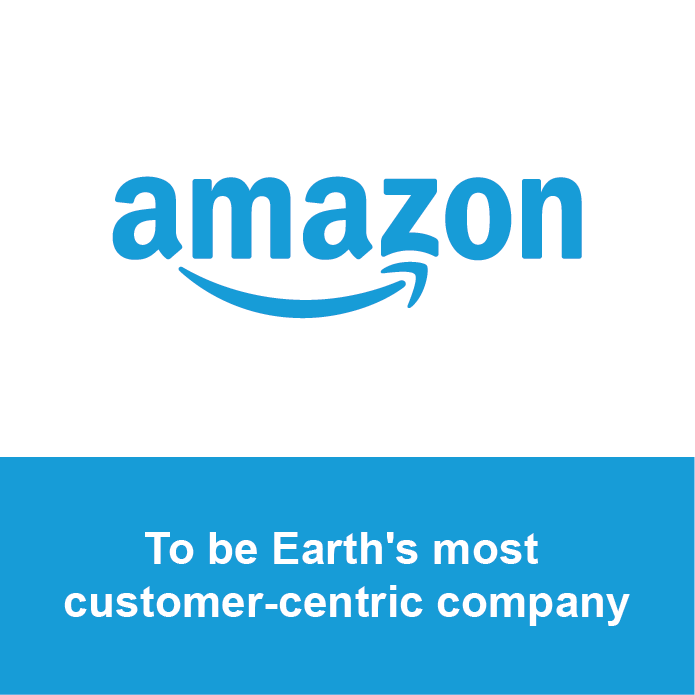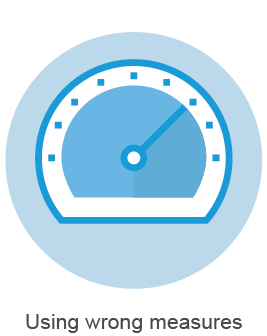As a small business owner, you’re tasked with making big decisions. How do you know if it’s the right time to make an investment? Are you putting your business on the right path? Having a strategic plan can help. The key elements of a strategic plan include your vision and mission statements, detailed goals and objectives, and action plans and scorecards to help you track your progress.
Make sure you include each of these key parts of a strategic plan in order to create a plan that will serve your small business. Including these detailed sections will help you and your employees stay on the same page and understand what you want to accomplish. A properly made strategic plan is not only thorough, but also helps ensure each section comes together to create a cohesive document to support you in leading your business.
Vision
Think of a vision statement as what your small business looks like in an ideal situation. What would your company be doing if it were operating in an industry with no risks or challenges? What goal do you want your business to accomplish that seem far fetched, but can still be achieved? (These may also be referred to as stretch goals.) These are big questions, yet the vision statement is important to strategic planning because it tells you and your employees the direction your business is headed in.
Here are some examples of vision statements:






From the examples above, vision statements are simple and to-the-point, and yet they convey a particular point of view and a depth of information. You can get a sense of what the company stands for, what they aim to be, and their strategy.
To write a good vision statement, think about the impact you want your company to have on your customers or society, or what you want people to think of when they see your company’s name.
Mission
A mission statement is similar to a vision statement, but includes more specific details on actions. The mission statement will detail what your company does and it explains to people outside of your company why your business exists.
Here are a few examples:



In some cases, you can mention specific products or services in your mission statement. Other times, you can describe an issue you and your business are passionate about fixing. After reading each of the examples above, you’re better able to understand what each company does and why it exists. Patagonia aims to create high quality products, while also making a positive impact on the environment. CVS Health’s products and services are aimed at helping people become healthier and live better. And Warby Parker allows customers to purchase quality glasses at a lower cost, while also giving back to society.
When you’re creating your mission statement, put yourself in your customer’ or client’s shoes. Craft your mission statement so a customer or client can understand what your business does and why. Think about why you started your business in the first place; use that reasoning to create your mission statement.
Goals and Objectives (Short-Term)
The goals and objectives you include in your strategic plan should align with your mission and vision statements. They indicate how your business is going to grow in the future.
The goals you choose also should be measurable and include a time frame. For example, your goal may be to expand your customer base by reaching a new demographic by the end of the year. To measure this, you could measure who your current customers are. Then, throughout the year, you can measure and track the new customers who are coming to your business.
When you’re creating your goals and objectives, remember to be realistic. Don’t be overly ambitious. While realistic stretch goals can inspire your team to better performance, if you pick a goal or objective that is not possible to achieve, it could leave you and your employees discouraged.
The top three reasons strategy implementation fails:



Action Plan
Action plans help keep you and your employees accountable to achieving the goals and objectives you’ve set out in your strategic plan. Your action plans can be broad or can contain specific details; it depends on the goal or objective the action plan supports.
In the example goal above of expanding the customer base by reaching a new demographic, your action plan may include specific details on a marketing plan to reach these new customers. The marketing plan could explain the type of advertising you’d pursue (print, digital, etc.) and how large your budget is.
You also can create an action plan for specific areas of your small business that demonstrate how the actions will contribute to the overall success of your company. An action plan for your employees responsible for manufacturing, for example, could include specific metrics for completing deliverables by a certain date and how this performance relates back to the company’s goals.
When you or your employees look at the action plans in your strategic plan, you and they should be able to quickly understand how the company and/or each business area will achieve the stated business goals and objectives. If your action plan includes deliverables, you should be able to see what needs to be done, when it needs to be completed by, and who is responsible.

Scorecard
A scorecard helps you and your employees track your progress toward the goals and objectives. If you set a goal to reach by the end of the year, a scorecard will help you understand where the business is during different points in time.
This is why it’s important to have measurable goals and objectives. If your goals or objectives are too broad, it could be difficult to measure and track your progress.
You can incorporate the scorecard into your action plan, so you and your employees have all the information in one area of the strategic plan. Here’s what an action plan with a scorecard could look like:

Strategic Planning Template
Now that you know what the key components of a strategic plan are, you can use a template to help create a plan for your business. The template can be built in a word processing or spreadsheet app, or through a specialized planning app.
The template outlines what your strategic plan should contain. Set up a section for each of the key components outlined above and, if the discussions with your strategic planning team led to additional ideas, you also can include those.
Creating—and following—a strong strategic plan is critical to the growth and success of your small business. A thoroughly developed plan, comprising the key components, will help you and your employees understand what the key priorities are and how everyone will contribute to achieving the goals and objectives of the business:
- Your vision and mission statements tell people—both outside and inside your organization—what you want your business to be and why it exists.
- Your goals and objectives detail what you want to accomplish in order to succeed.
- And your action plans and scorecards help you track your progress as you work toward accomplishing those goals and objectives.
Your business’ strategic plan isn’t a stagnant document. It should continue to evolve and change as time goes on. Reviewing and updating the plan regularly can help you prepare for the future and work more effectively toward your goals.
Next Steps: You’re busy. We get it. So why not let us do some work for you? By signing up for the weekly Small Biz Ahead Newsletter, you’ll receive hand-picked articles, How-Tos and videos covering the latest in small biz tools and trends. We’ll do the research while you spend your time where it counts: managing and growing your business.







Such an insightful article guys! Really enjoyed reading it!
That’s great to hear, Carolina! Thank you for the nice comment!
Great article, I also found a relevant article that explains how to write a good vision statement: https://www.cascade.app/blog/write-good-vision-statement
Thank you for sharing, Jack!
Great work done. Congrats guys.
Thanks! Glad you enjoyed the article!
Thank you…As a young entrepreneur in town… Have enjoyed and am good to go.
Glad you enjoyed the article!
Thanks so much for the information.
Glad it was useful!
Thank you for your inputs.
Thank you!
Often the most difficult part of the project is knowing where to begin–and these comments helped.
Thanks for the comment, Judy!
Great article. A couple of other important features to a good strategic plan, which support the Vision and Mission are to have Measures of Success and Guiding Principles. The Measures of Success are not the periodic numerical goals, but rather those indicators that will remain important on an ongoing basis even if the numbers change, such as Customer Retention, Growth, Employee Satisfaction, and the like. Guiding Principles are the core values of the organization, such as Integrity, Accountability, Environmental Responsibility, Innovation, and Communication.
Thank you for the feedback, Sherman! Glad you enjoyed this article.
You are certainly welcome.
well done like what you guys are doing and very helpful
thank you for the info
So glad you found this article helpful! Thank you for the comment, Ron!
Thanks for the useful information.
We are glad you found this helpful! Thanks for the comment!
An excellent article. Well done!
Thank you!
Great article
Thank you, Fred!
I would like to have some strategies in how to grow my business.